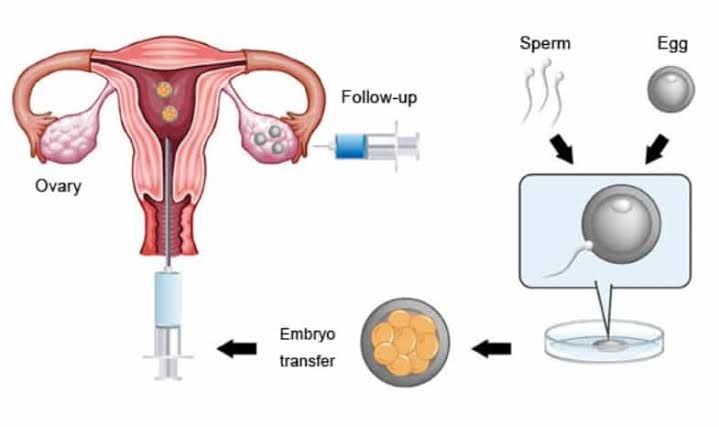
Advantages and Applications of Embryo Transfer
Embryo transfer (ET) is a reproductive technology widely used in both human medicine and animal breeding. The advantages and applications of embryo transfer include:
- Increased Reproductive Efficiency: ET allows for the use of superior genetics by enabling the transfer of embryos from high-quality donor females to multiple recipient females, thus maximizing the genetic potential.
- Genetic Improvement: In livestock, ET facilitates the rapid dissemination of desirable traits within a herd or breed, leading to improved productivity and disease resistance.
- Preservation of Genetic Material: ET can be combined with cryopreservation techniques to preserve embryos for future use, which is particularly valuable for endangered species or rare breeds.
- Overcoming Infertility Issues: In humans, ET is often used in conjunction with in vitro fertilization (IVF) to assist couples facing infertility challenges.
- Facilitating Research: ET is instrumental in various research fields, including developmental biology and genetics, allowing scientists to study early embryonic development and gene function.
Steps in Embryo Transfer Technology
The process of embryo transfer involves several critical steps:
- Selection of Donor and Recipient Animals: Choosing suitable donor females with desirable traits and healthy recipient females that can carry the embryos to term.
- Insemination of Donor: The donor female is artificially inseminated with sperm from a selected male to produce embryos.
- Collection of Embryos: After a specified period post-insemination (usually 7-10 days), embryos are collected from the donor’s uterus using a non-surgical technique known as embryo flushing.
- Identification and Evaluation of Embryos: Collected embryos are evaluated for quality based on their morphology (shape and structure) using microscopy techniques.
- Cryopreservation (if applicable): High-quality embryos may be frozen using cryoprotectants for future use, ensuring they remain viable over extended periods.
- Transfer of Embryos: Selected embryos are transferred into the uterus of prepared recipient females through a non-surgical procedure.
- Pregnancy Monitoring: Recipients are monitored for signs of pregnancy through ultrasound or hormonal assays after embryo transfer.
Selection and Management of Donor and Recipients
Selection Criteria
- Donor Selection:
- Recipient Selection:
- Similar size and breed as the donor to ensure compatibility.
- Good health status with no reproductive issues.
- Proper synchronization with the donor’s estrous cycle to optimize implantation chances.
Management Practices
- Regular veterinary check-ups for both donors and recipients.
- Nutritional management to ensure optimal body condition scores.
- Hormonal treatments may be administered to synchronize estrous cycles between donors and recipients effectively.
Insemination of Donor; Collection, Identification, and Evaluation of Embryo
Insemination Process
- Artificial insemination is performed at an optimal time during the estrous cycle when ovulation occurs.
- Sperm quality is assessed before insemination to ensure high fertilization rates.
Collection Process
- After approximately one week post-insemination, embryos are collected via uterine flushing.
- A sterile saline solution is introduced into the uterus, followed by gentle suctioning to retrieve any developed embryos.
Identification and Evaluation
- Collected embryos are examined under a microscope for developmental stage (e.g., morula or blastocyst).
- Quality grading systems classify them based on morphology; higher-grade embryos have better implantation potential.
Cryopreservation of Embryo; Transfer of Embryo; Limitations of Embryo Transfer Techniques
Cryopreservation Techniques
- Cryoprotectants such as glycerol or dimethyl sulfoxide (DMSO) are used to prevent ice crystal formation during freezing.
- Slow freezing or vitrification methods can be employed depending on species-specific protocols.
Transfer Process
- Prior to embryo transfer, recipient females undergo synchronization treatments if not already synchronized with donors.
- Using a specialized catheter, viable embryos are placed into the uterine cavity without surgical intervention.
Limitations
- Technical Expertise Required: Successful ET requires skilled personnel trained in handling delicate procedures like embryo collection and transfer.
- Cost Factors: The technology can be expensive due to equipment needs, laboratory facilities, and skilled labor costs involved in procedures like cryopreservation.
- Variable Success Rates: Not all transferred embryos result in successful pregnancies; factors such as timing, embryo quality, and recipient health play significant roles in outcomes.
- Ethical Considerations: In human applications, ethical concerns regarding embryo selection, storage duration, and potential misuse arise frequently within societal discussions about reproductive technologies.
In conclusion, while embryo transfer technology offers numerous advantages across various fields—particularly agriculture and human reproduction—it also presents challenges that require careful consideration during implementation.







